We’ve had some requests for more details about the Mongolian gers (their homes) and we’re happy to provide! You just ask and we’ll always do our best to make blog entries on things you might find interesting.
TELL ME A BIT ABOUT THE GER
Inside, gers are one big room that maybe 10 people live in. Sometimes you’ll find them in the same compound with a house (permanent) which gets left vacant when the ger is moved to a new location – they move with the seasons to keep the animals grazing. The basic structure is made of a lattice of wood for the round walls, wood riser sticks for the roof and a round center where the ‘chimney’ would be. Outside, everything is covered with big sheets of handmade felt (one layer in the summer, a 2nd layer added if it’s cold) which are tied in place. Much more about that below.
The interior walls are covered with handmade tapestries (and the occasional mass produced one) and the floors have hand-sewn felt rugs that you can sit or sleep on. The door is on one side and directly opposite of it sits the most senior person in the family. It’s a seat of honor. Whenever we trekkers were invited in, we were given that seat of honor. There is also sometimes a small bed or two with a curtain in front of it for the older folks or the parents…or the occasional newlyweds!
A dung-fired cooking stove is set up in the center of the tent with it’s heat exhaust pipe going up through a hole in the roof. It heats the ger up nicely when it’s running and they do all their meals on it, as well as cooking bread, doughs, heating yak tea, etc. Cozy!
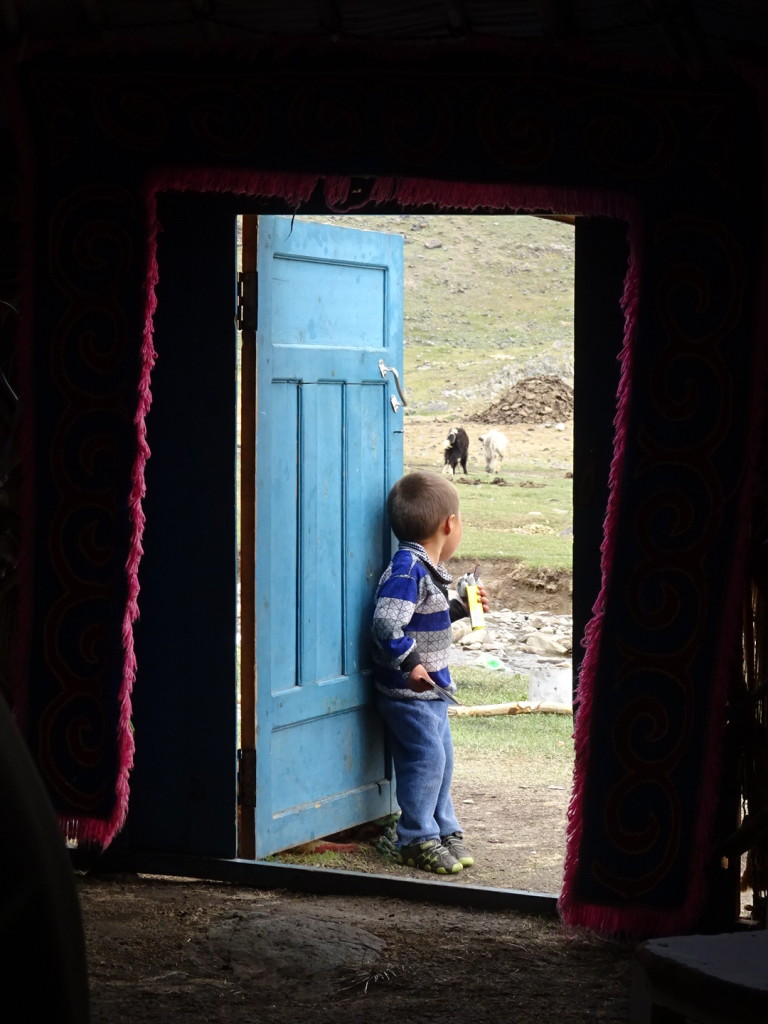
Welcome! But don’t stand in the doorway during winter – it lets all the cold air in, blocks the light and makes the host think you’re questioning their hospitality!
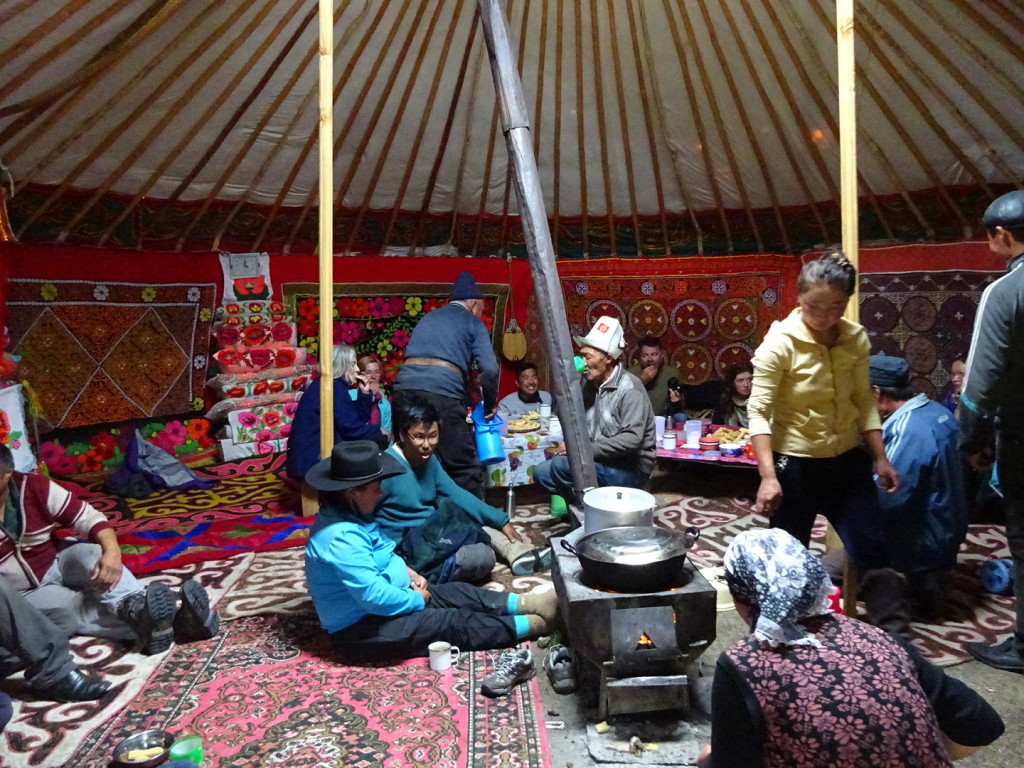
Dinner in one of the gers. You can see the two warm-toned poles in this photo – those are support beams used in the bigger gers. Not all the gers had these.
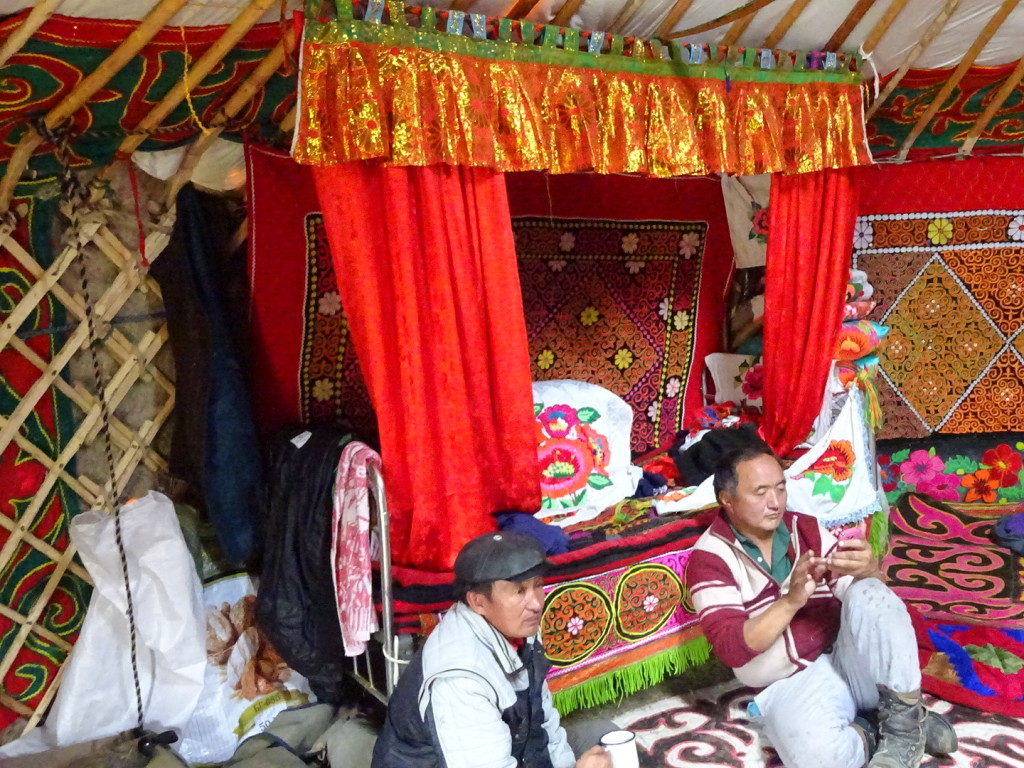
The ger might have one or two beds with a curtain in front for the parents or grandparents. Not a lot of privacy in gers!
OH! THE TEXTILES!!
We never got over how cool all the textiles were. They stay with families for generations and the bottom is always left unfinished so the next generation can add on to it.
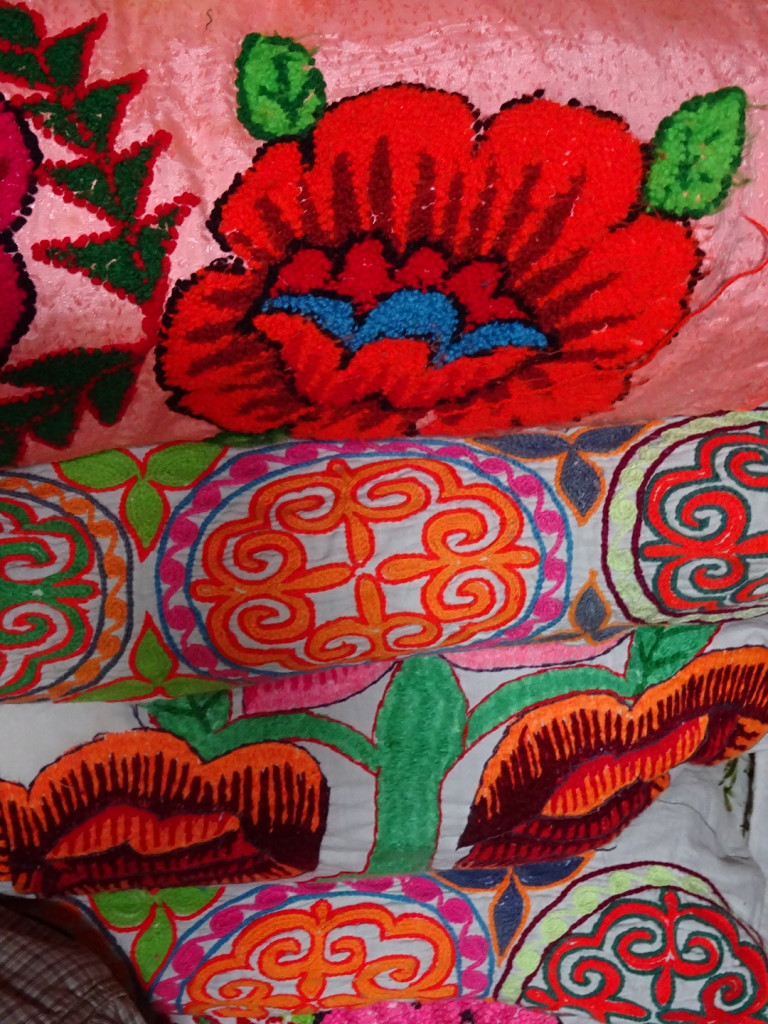
Even the pillows are fancy. A big stack of pillows means a lot of guests can stay in the ger which is important in this culture.
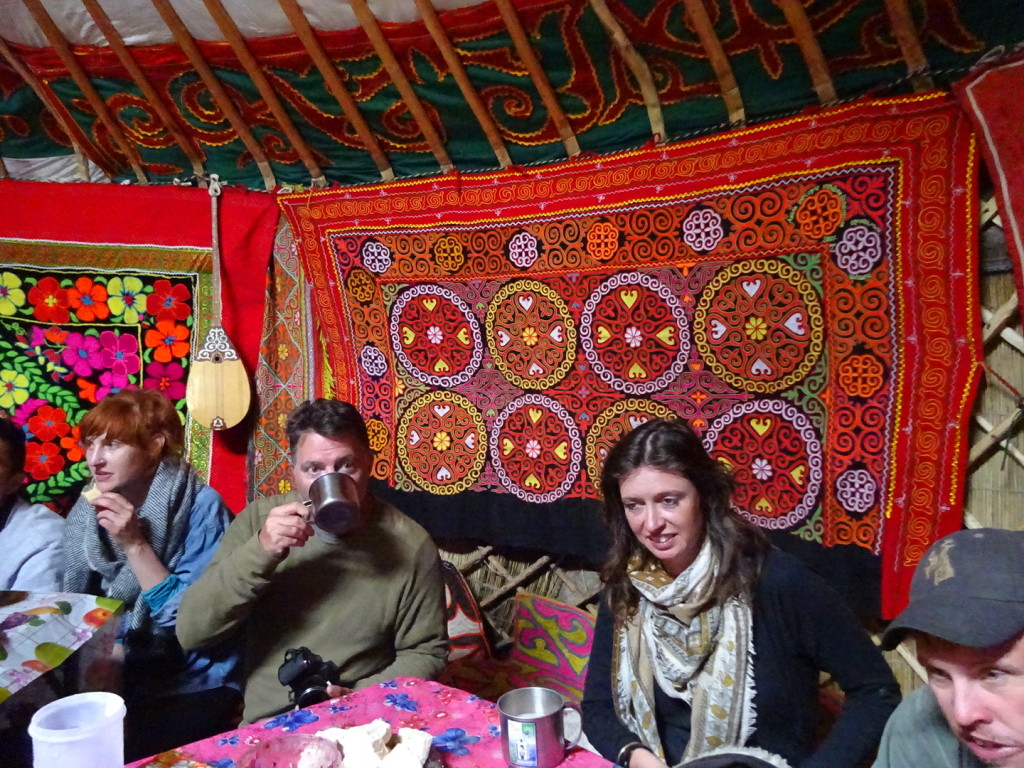
See the unfinished bottom edge of the main hanging? Successive generations add to it as time allows.
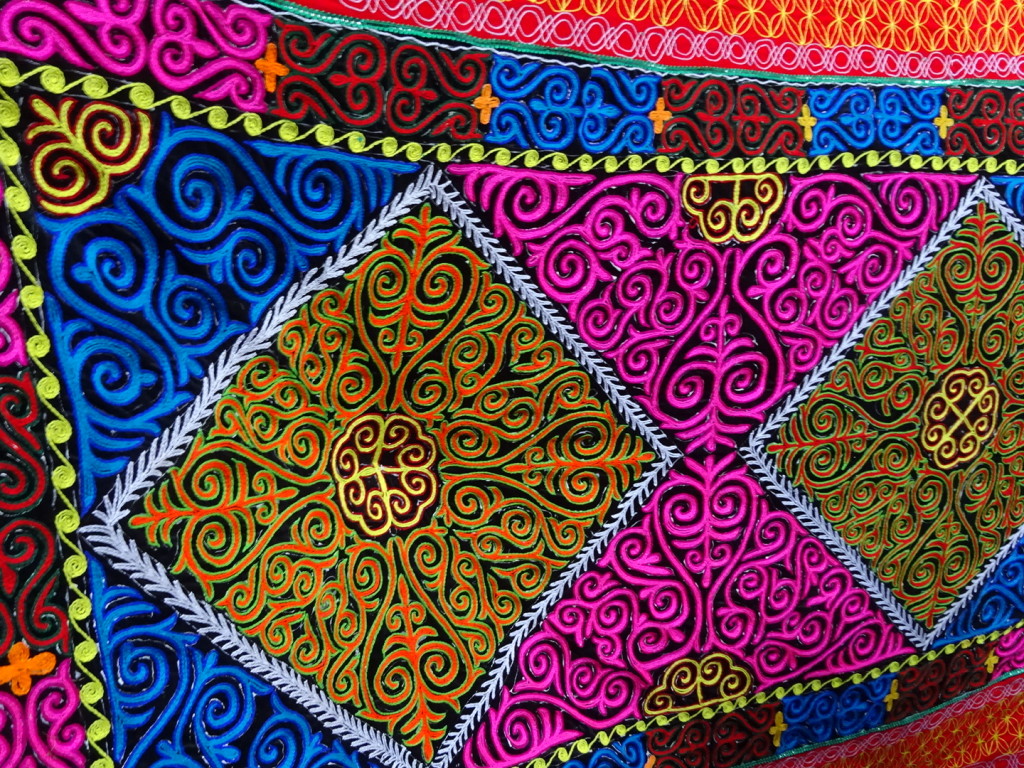
Lots of the patterns had symbolism, but we didn’t learn about them all. Definitely some of the curves related to ram’s horns and to a sort of maze to trap bad dreams/spirits that might come a-visiting.
LET’S BUILD A GER TODAY.
The ger is packed up and moved about every three months so that animals have fresh pastures from which to eat (think teepees of Native Americans). We moved our base camp ger about 10 yards because it had become structurally unsound…probably from all of us leaning against the walls. I think it took an hour, but when it’s not a bunch of amateurs helping, it can be done in half that time.
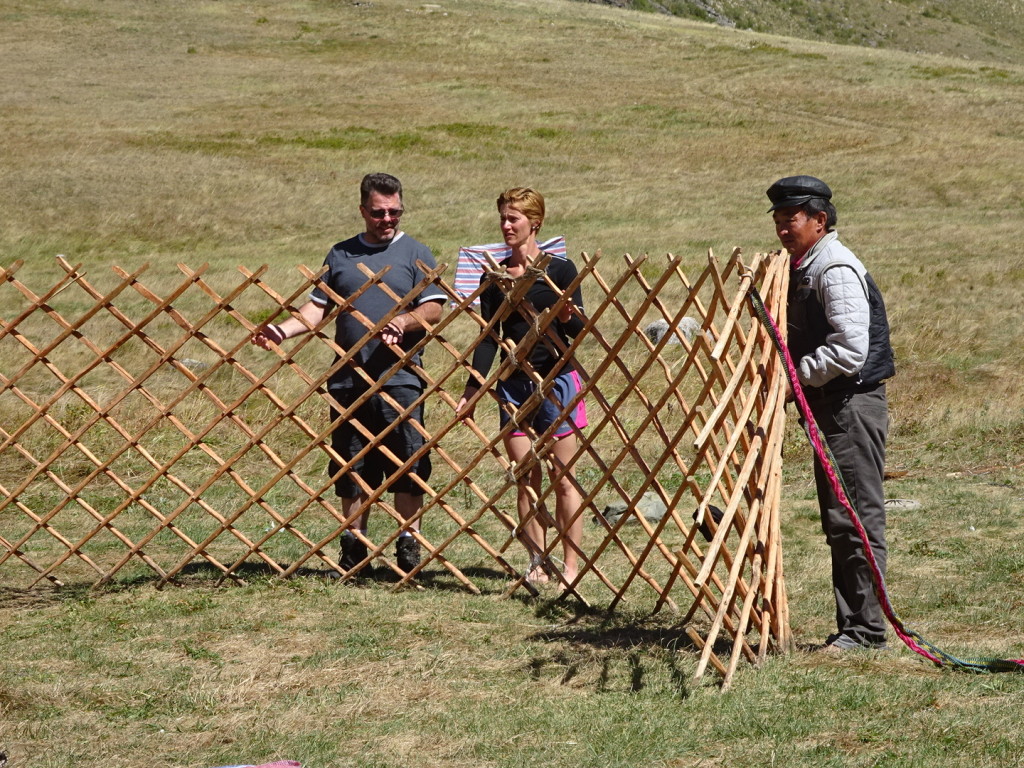
#1 – make a circle with lattice fences and strap it together. (yes, the same kind you use in your garden)
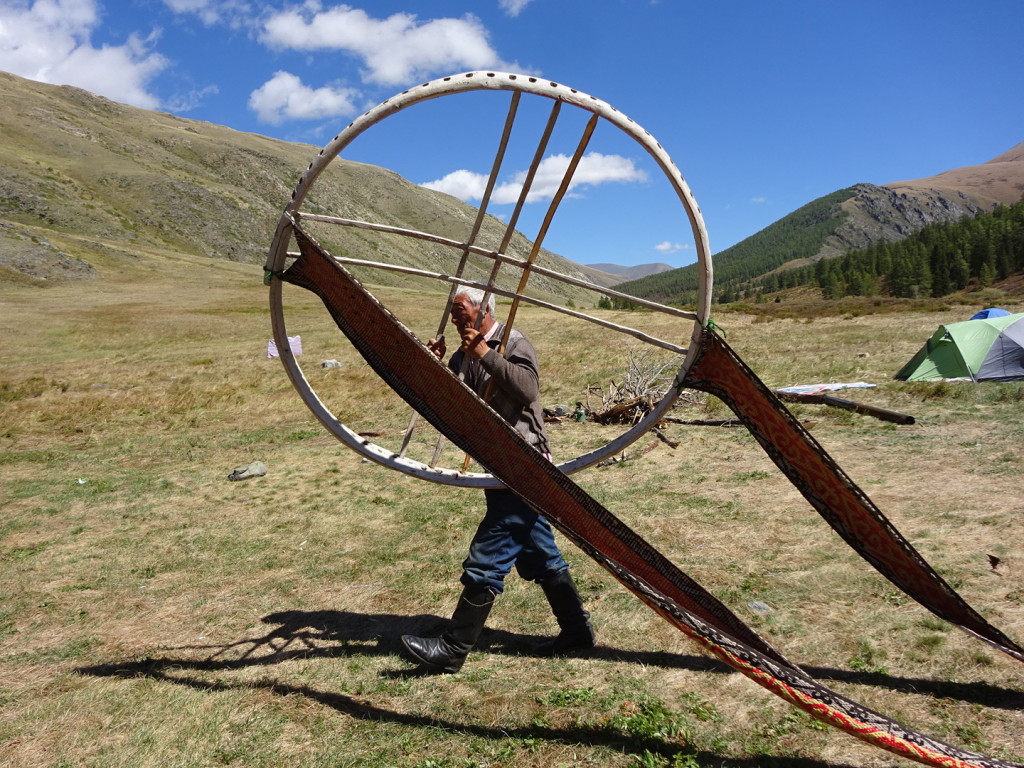
#2 someone holds this up in the middle. It holds the roof together. The two textiles hanging from it are considered the man and women of the house. They are sacred and you should never walk between them! They also help support the finished structure in case of high winds. (Anner questions this, but that’s what we were told.)
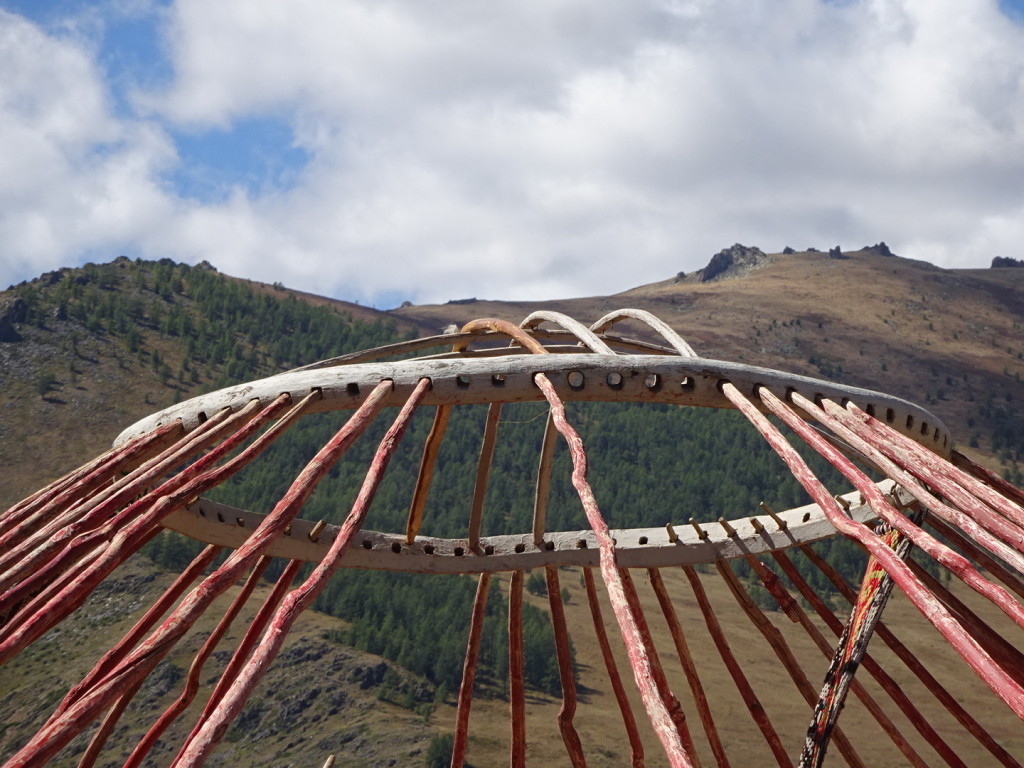
The number of support poles is dependant on the size of the ger. We were in ones with 50-70 poles, but apparently really big gers use close to 100!
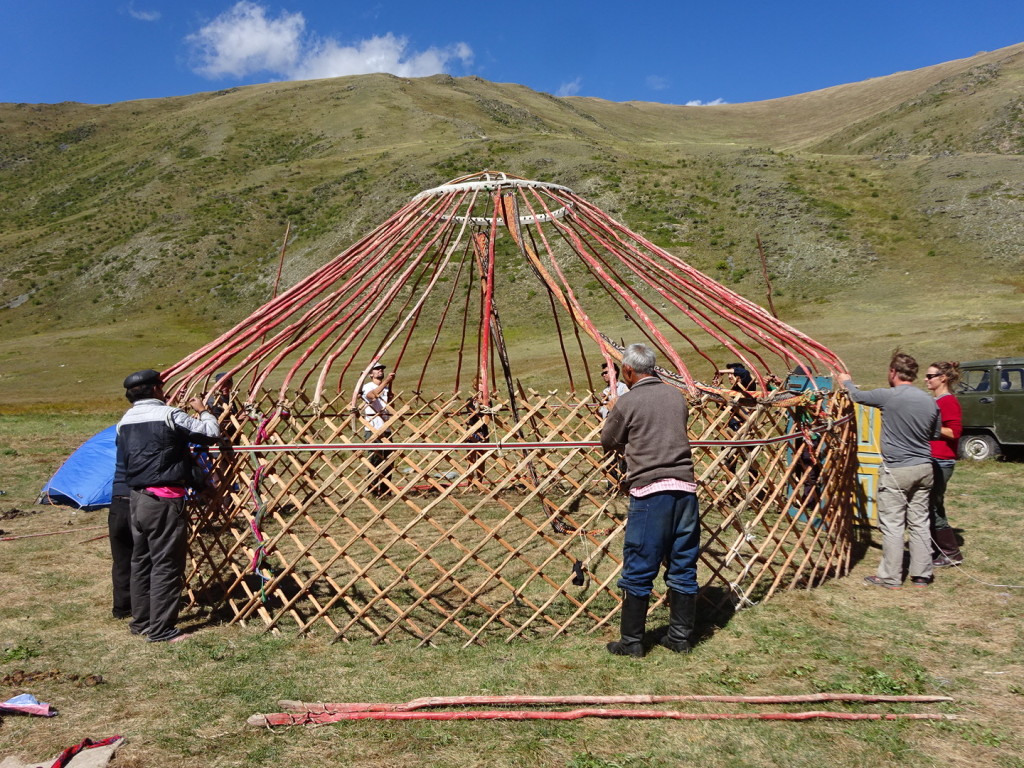
#3 lash the poles to the lattice and the big circle center thingamajig. The Khazaks used curved-end roof poles, but I think the Mongols use straight.
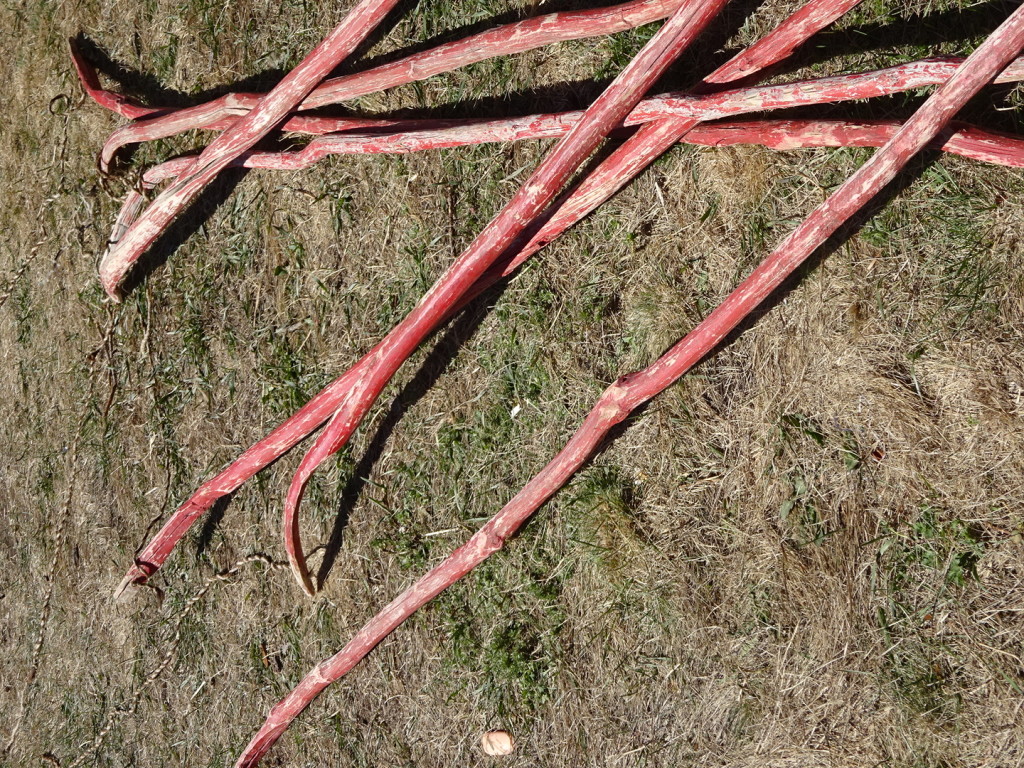
See the curved ends? That’s what was tied to the lattice. The opposite ends are straight and go into the center roof circle.
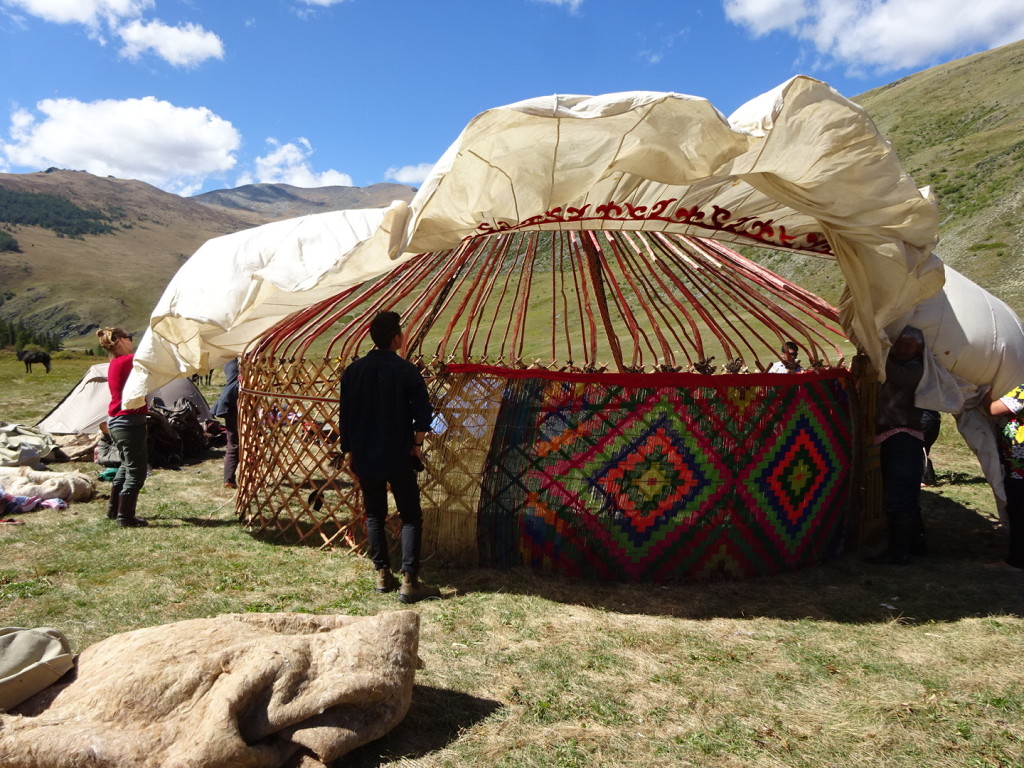
#4 put big canvases over the roof (there would also be felt, I think, if it had been winter). The top has a hole to let the smoke out from the stove. The hole has a cover attached to a rope so at night we can keep the cold air out or it can be covered in case of rain.
Video of putting the top canvas over the ger.
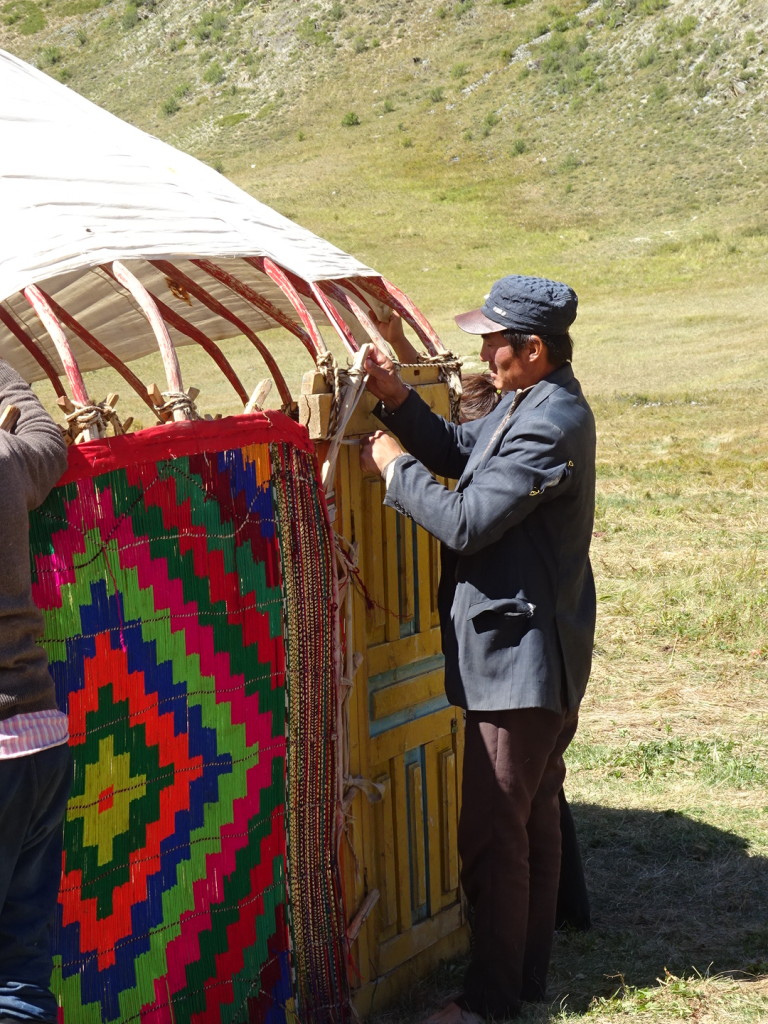
#5 Add some tapestries. I think the fabric by the doors were usually different than the other textiles.
Move the stove in + all the beds and textiles and you’re good to go for another three months!
EAT, DRINK, AND BE MERRY.
DOGS & CATS
Most gers have a dog outside, often times tied to a stake. The dog’s job is to protect the herd and alert the family to wild animals that might hurt the yaks or sheep. Dogs are not really pets in Mongolia. In fact, before entering a ger you say, in Mongolian of course, something along the lines of “call off the dogs”.
Each ger had a cat to take care of the mice and whatever other critters. They were sometimes tied up, which we didn’t completely understand. Unlike the dogs, the cats were allowed inside the ger and kids played with the cat. They also didn’t seem to catch all the mice as we definitely saw one or two! Our head cook, Saraa, HATED the cats. She had some serious cat phobia, so the boys would occasionally run into the ger, quite literally throw a cat at her, she’d scream and the cat would run away. Ahh, boys….the same around the world.
ANSWERING A FEW OTHER QUESTIONS
- The gers are really mobile homes and used that way. As there are a few tourists coming to visit (i.e. – our tour!), they are starting to sew some items with the hopes of selling them, but the gers in general aren’t shops, just homes. That being said, a few of us bought wonderful carpets or other textiles. They’re also happy to sell other items if we asked! Got ourselves a pair of wonderful, very old hand-made stirrups for the studio, for example.
- There are two types of gers: Mongolian and Khazak. We only visited Khazak gers, so that’s what we can really talk about, but we were told that traditional Mongolians gers are similar, but smaller and shorter.
We hope this gave you a bit more of an insight into the gers and how they relate to Khazak-Mongolian life. Please let us know what else you’d like to see!

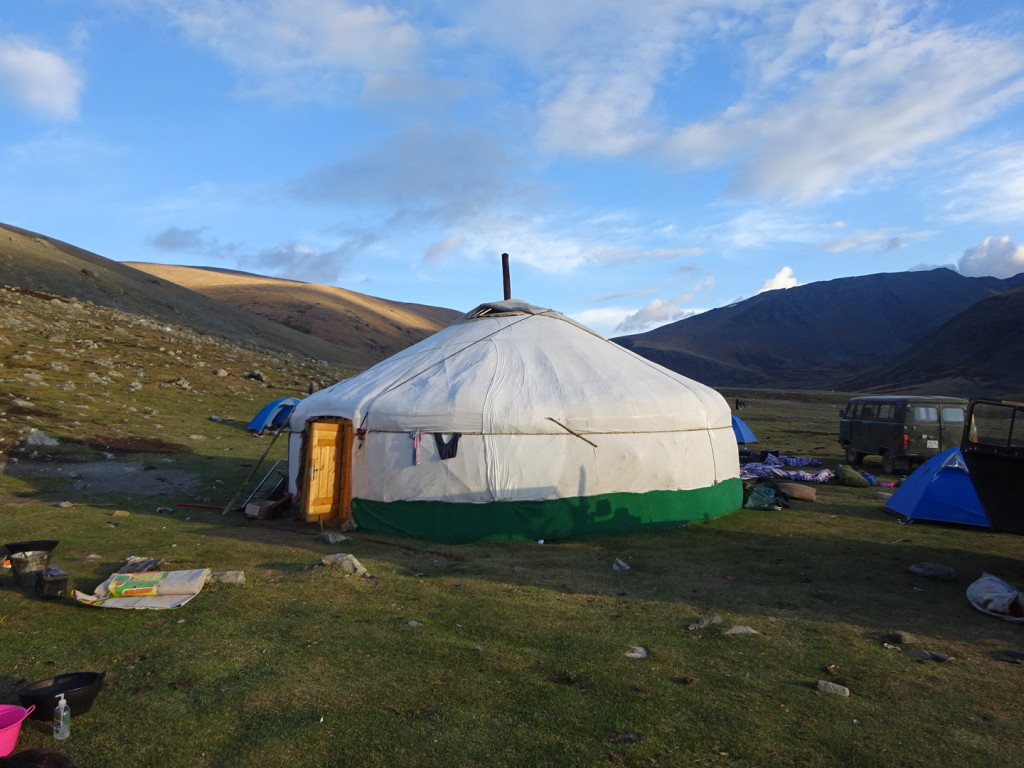
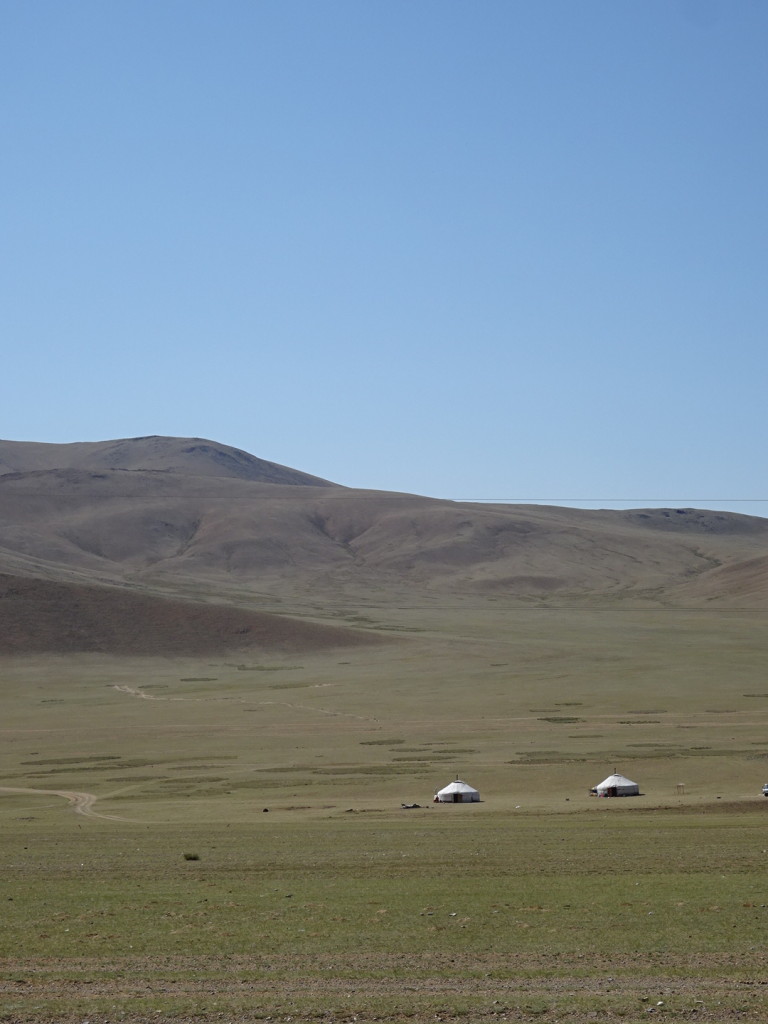
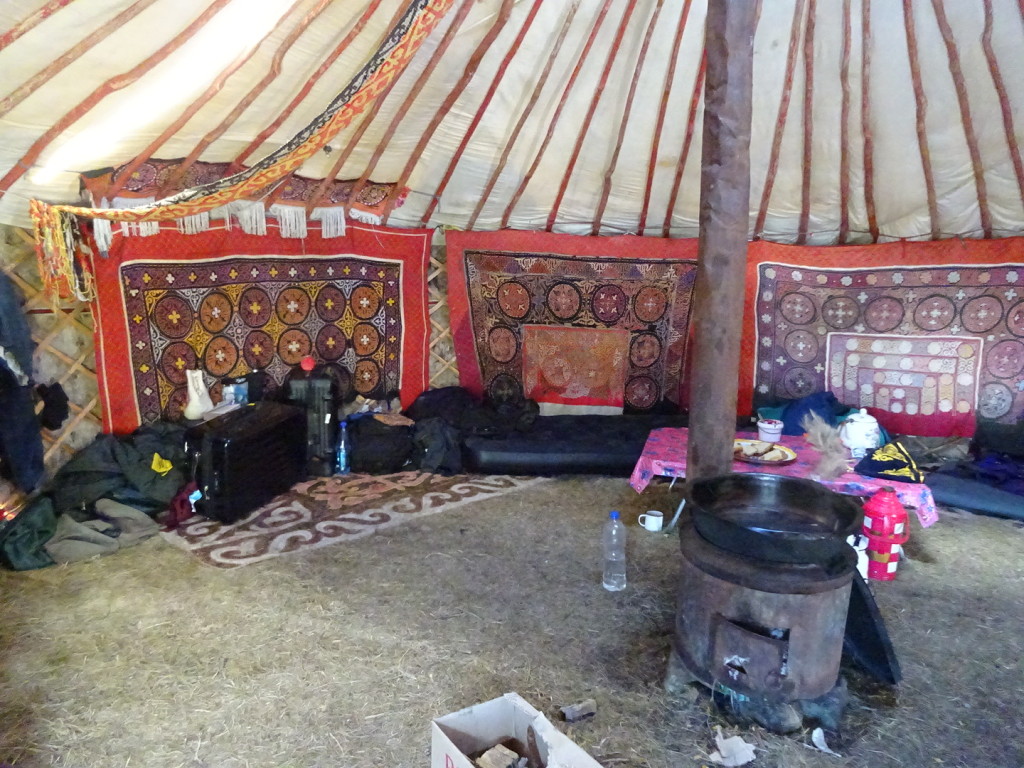
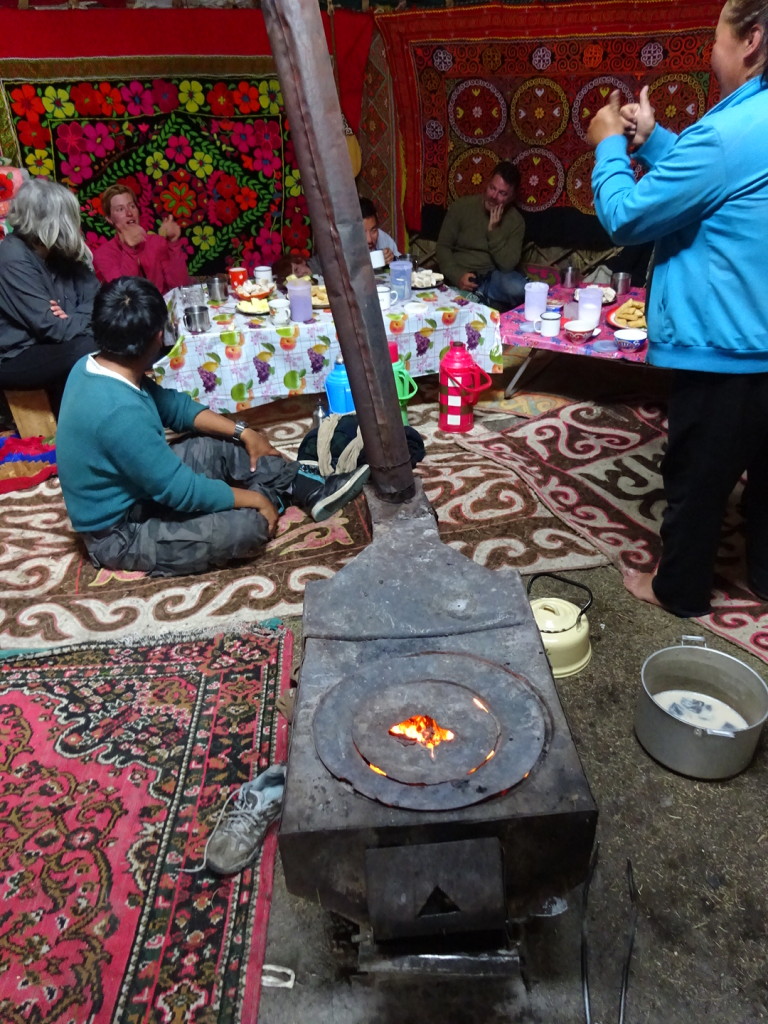
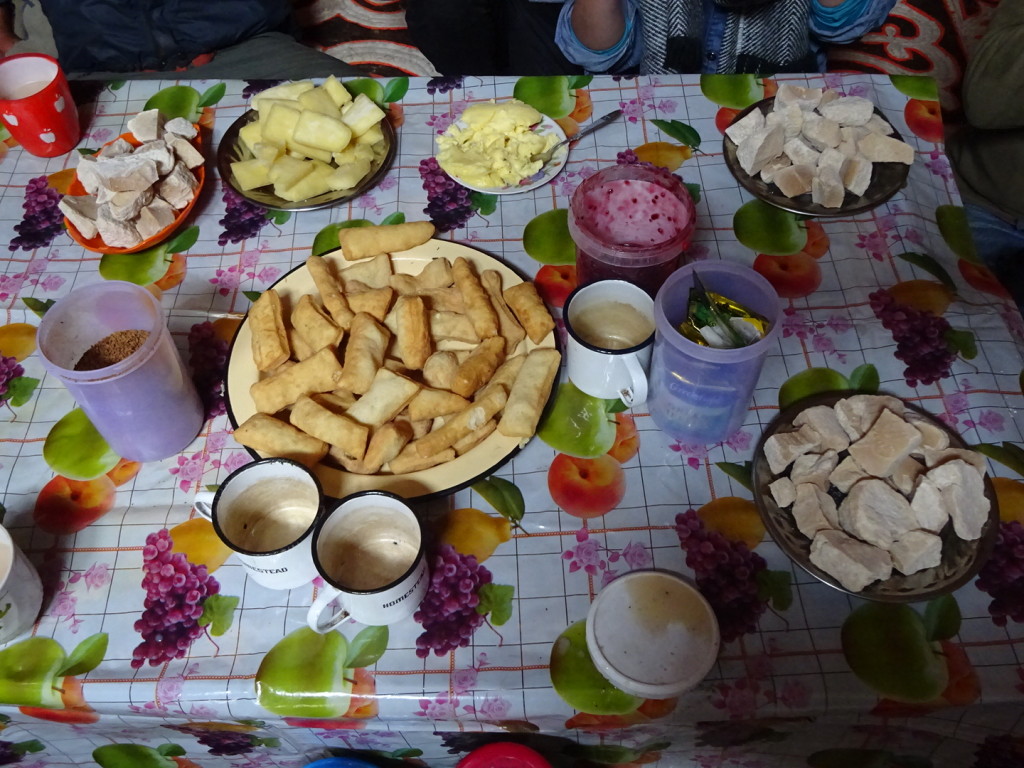
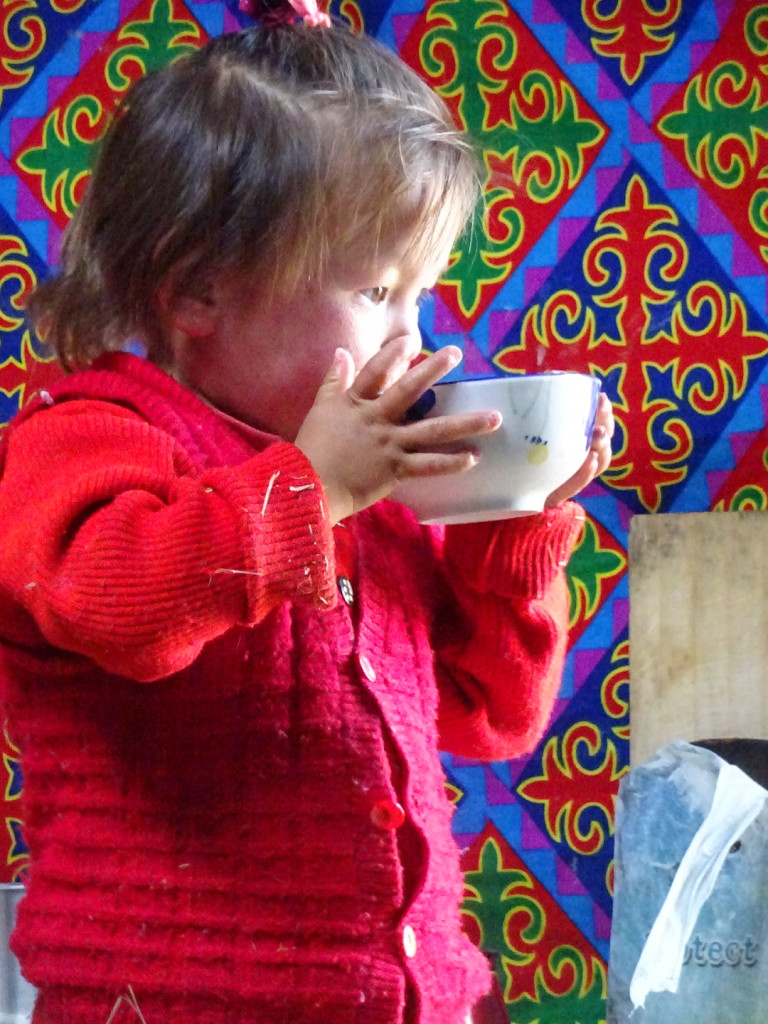
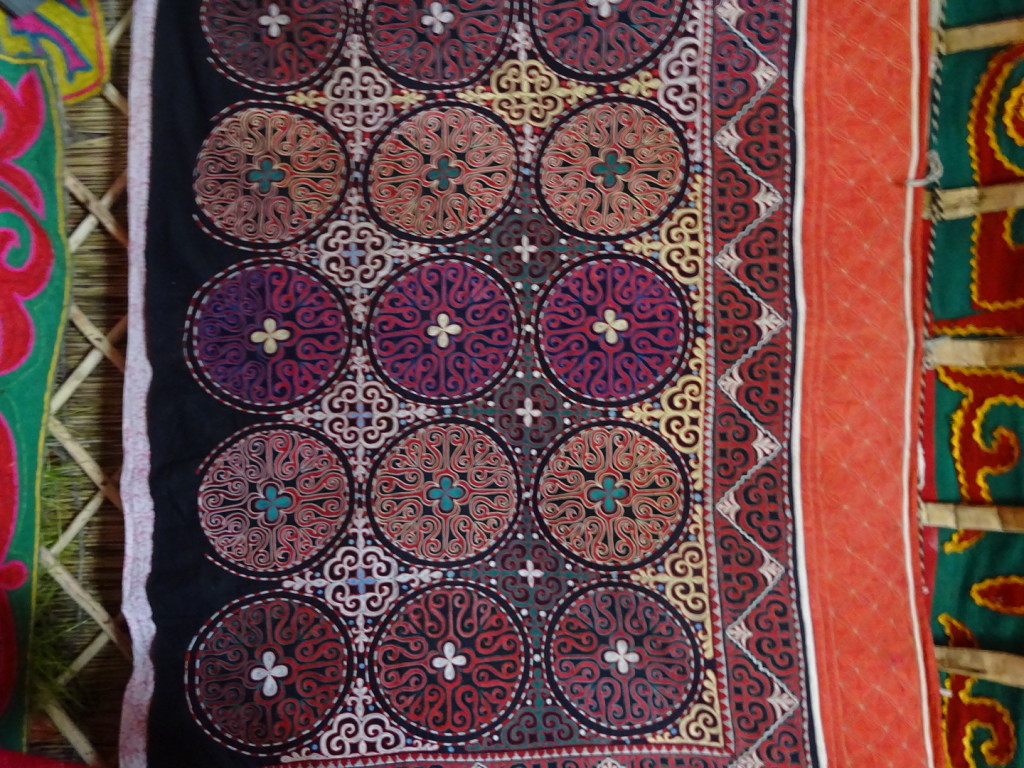
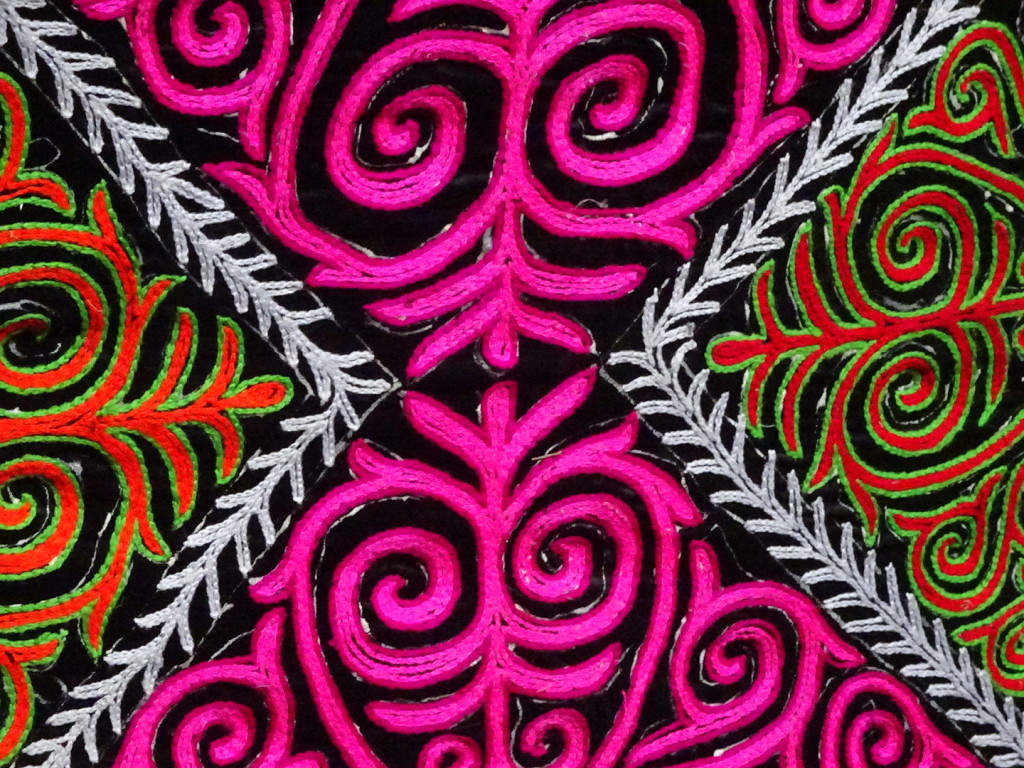
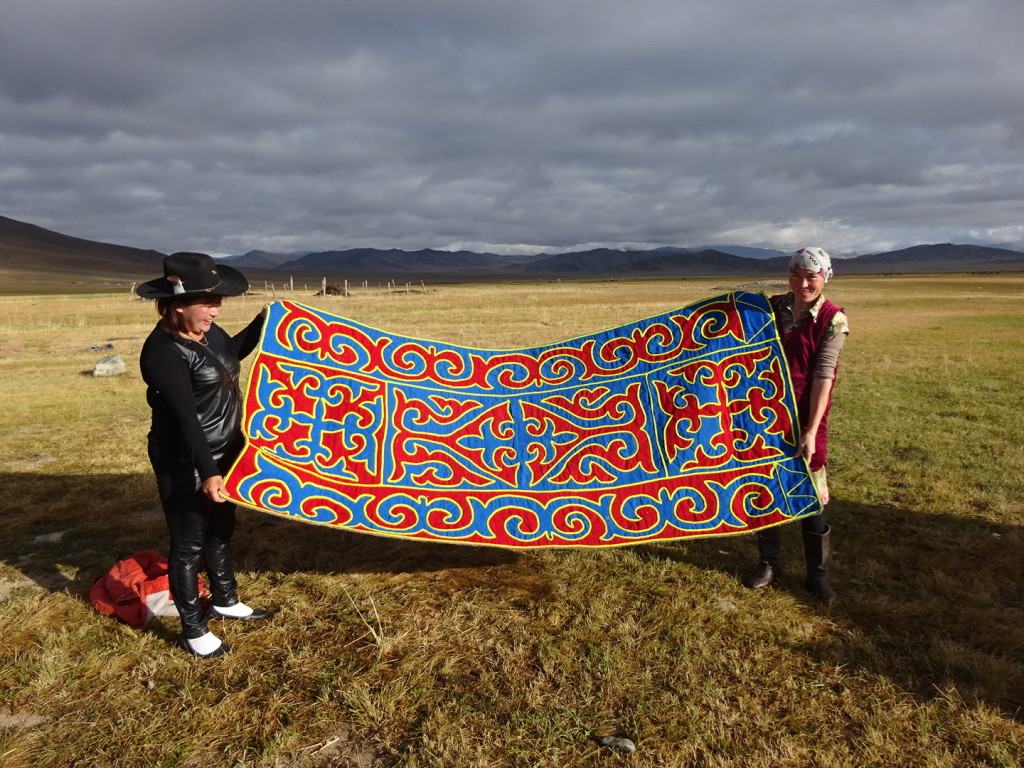
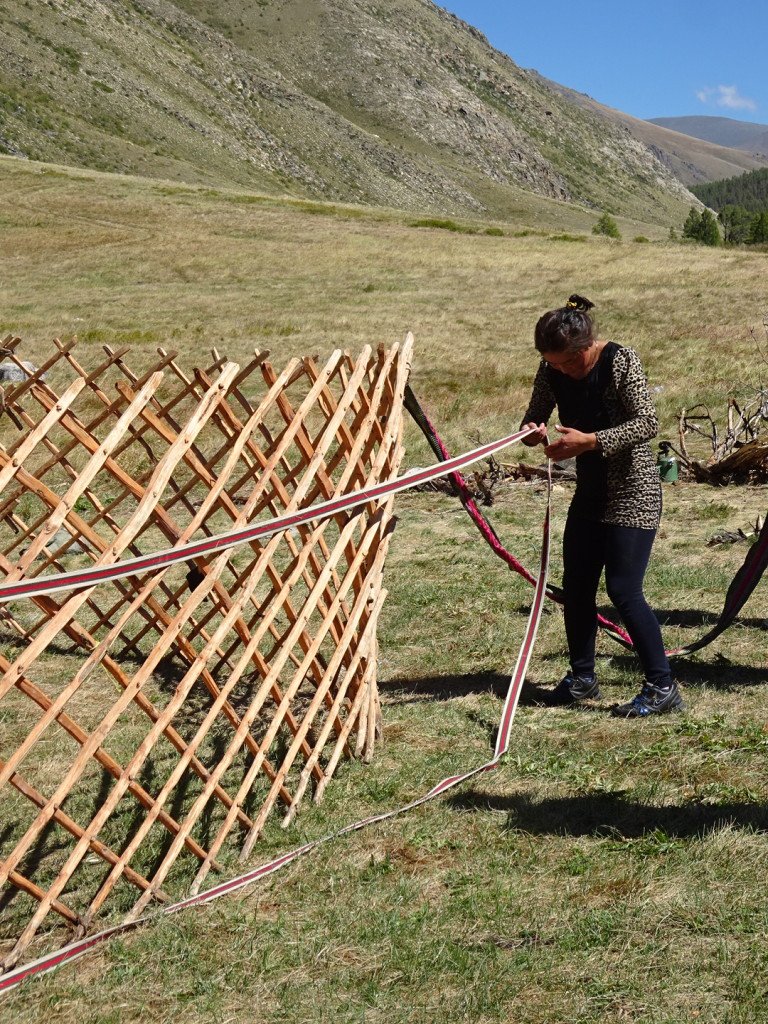
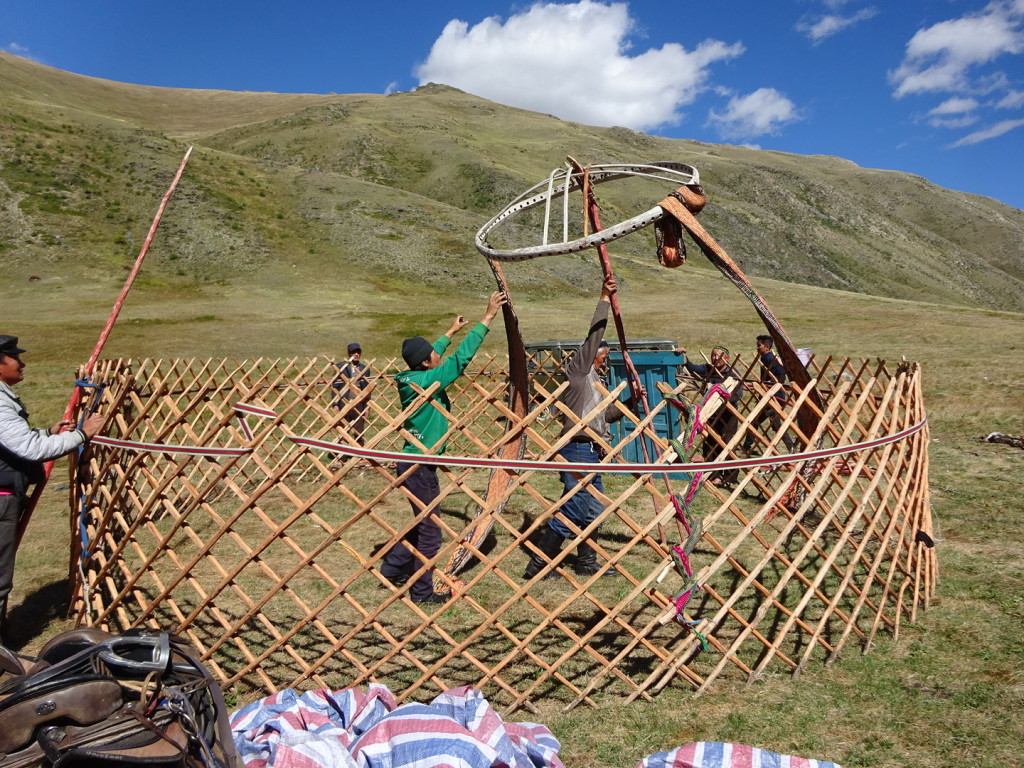
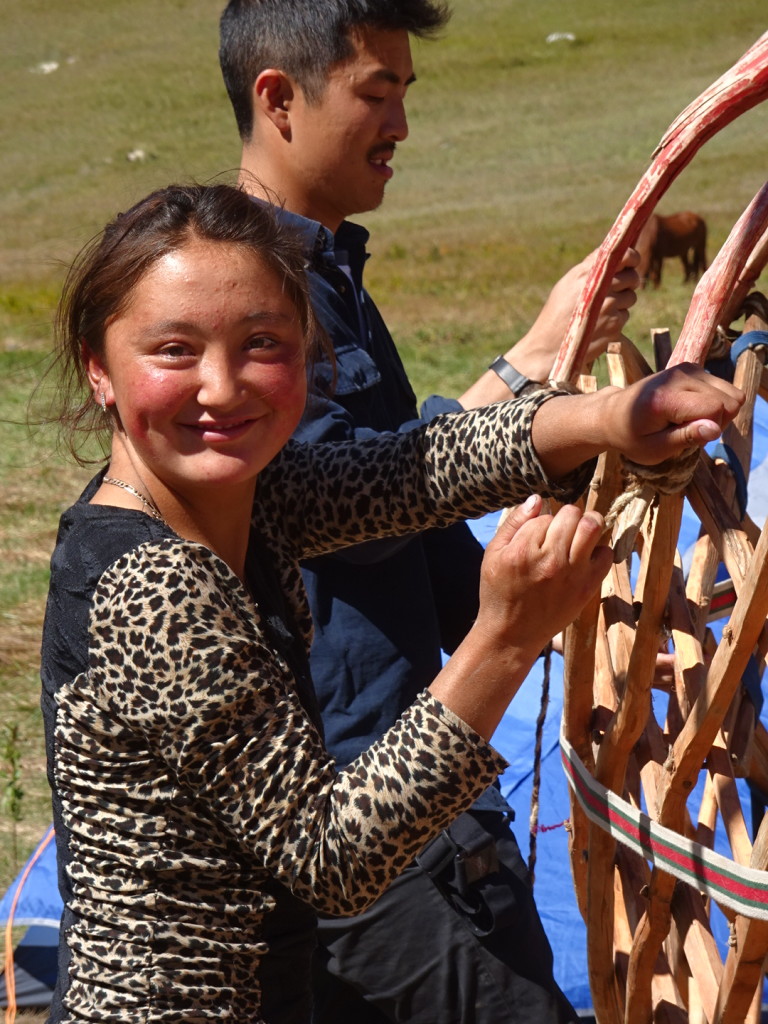
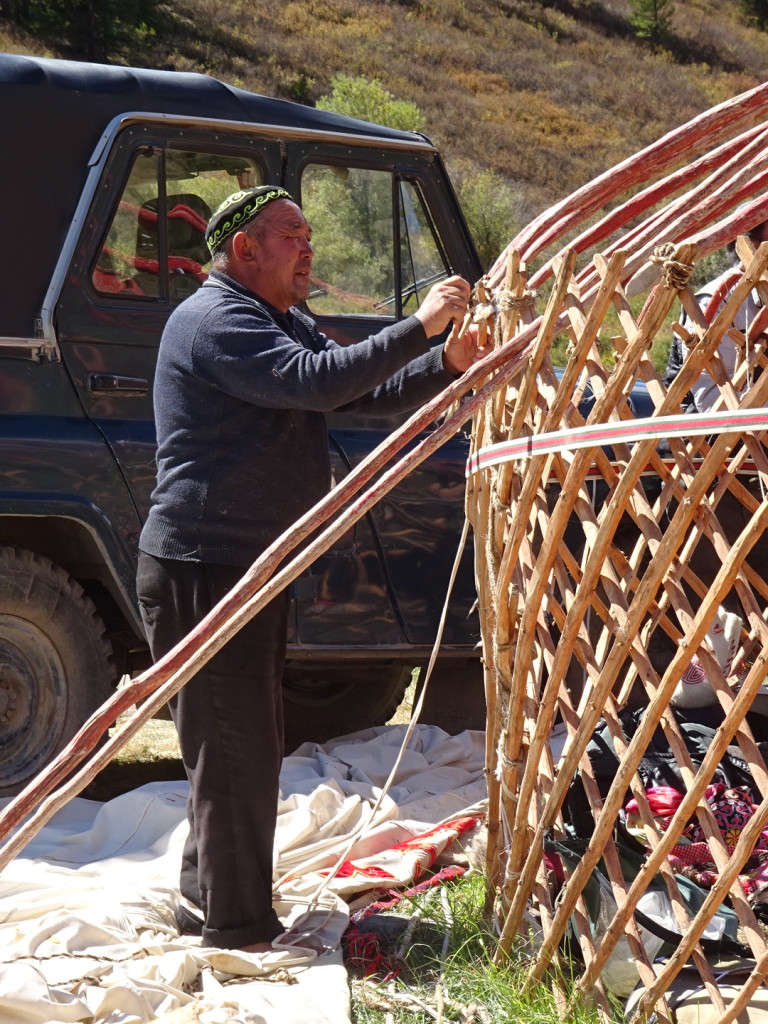
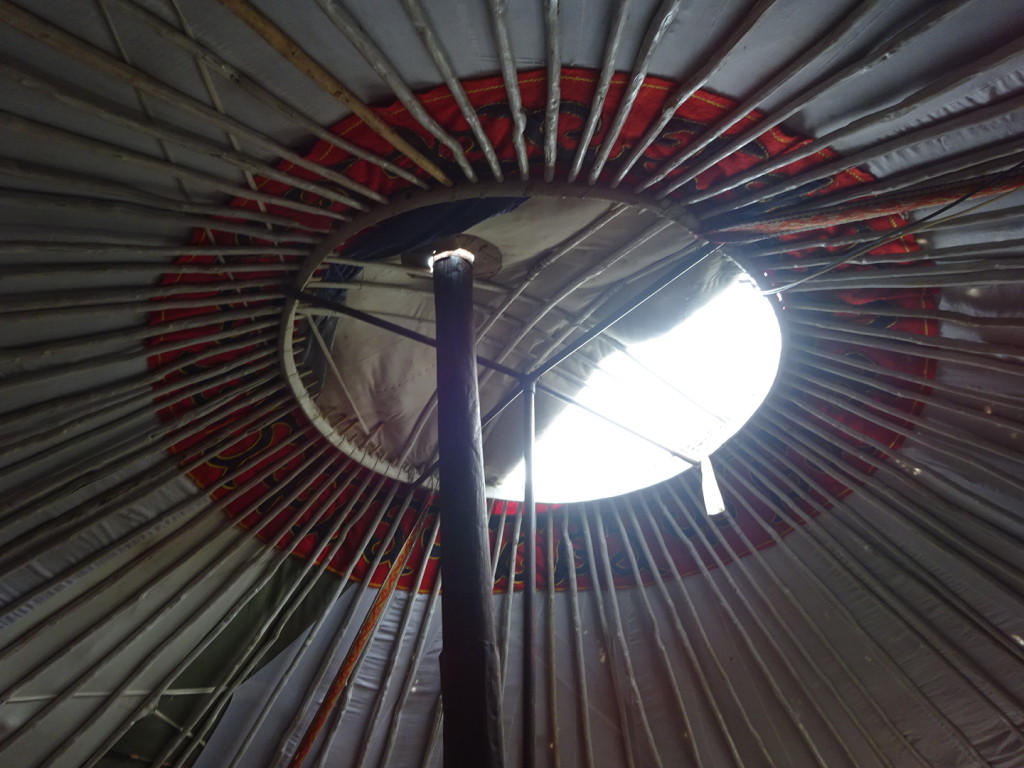
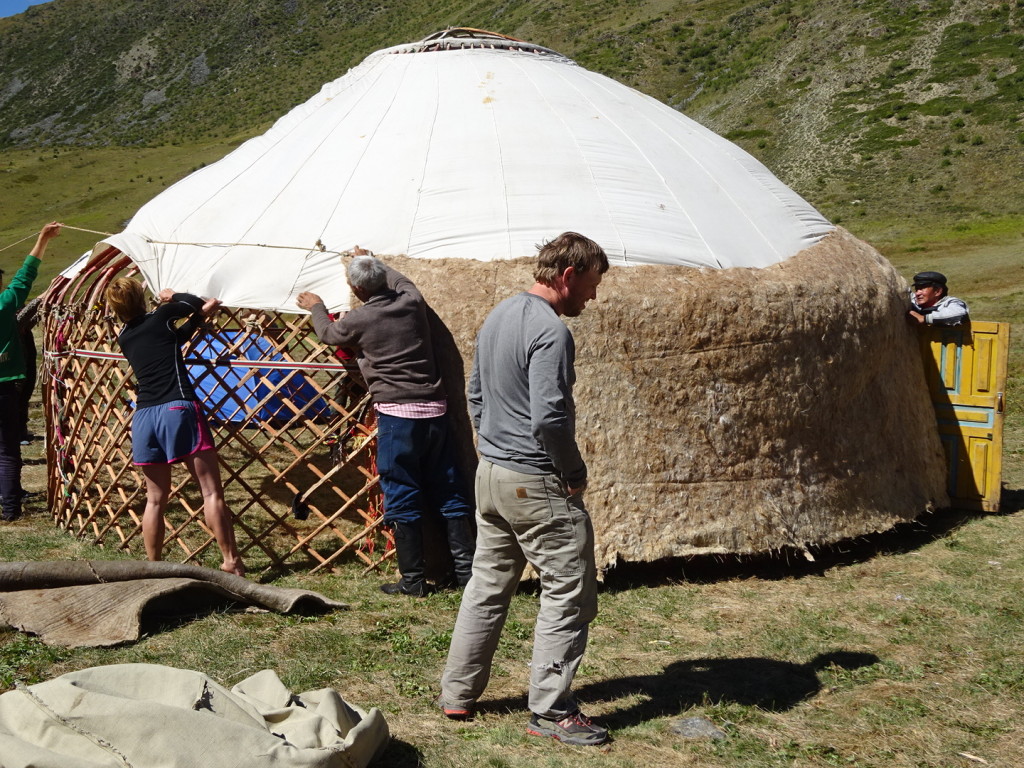
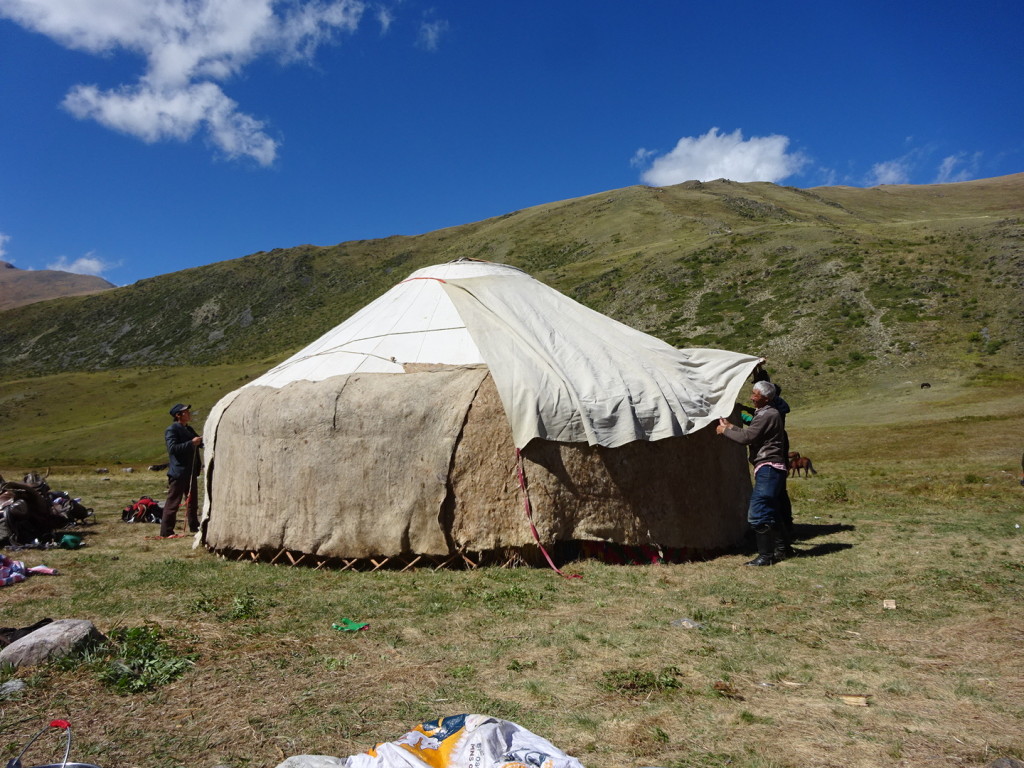
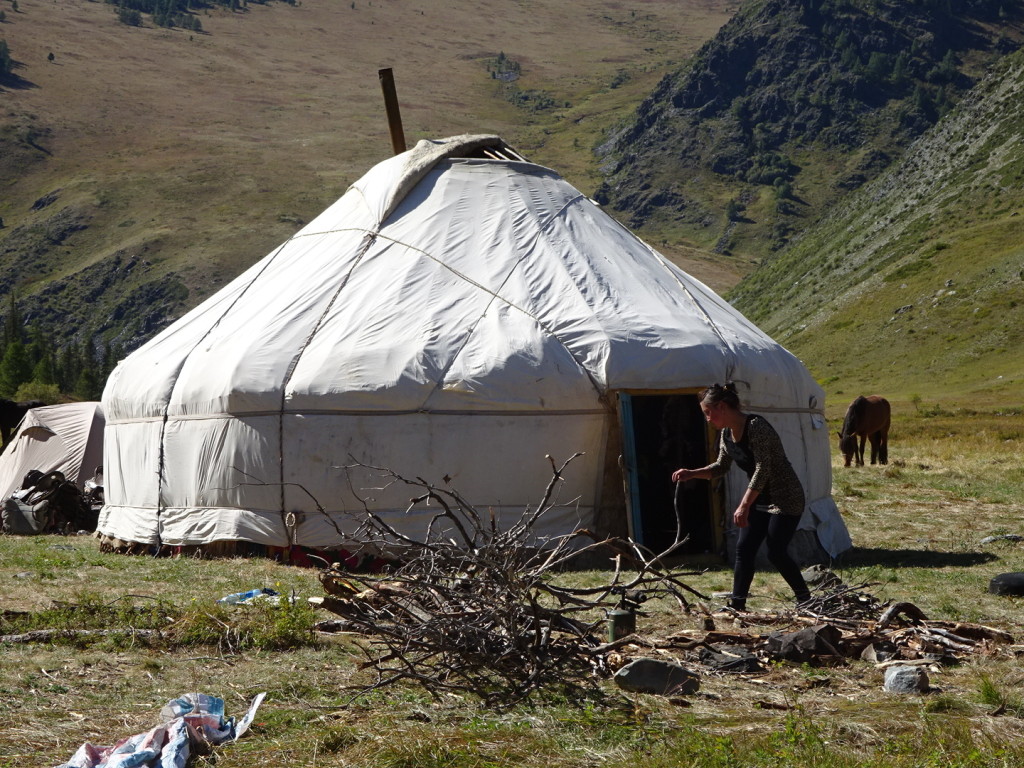
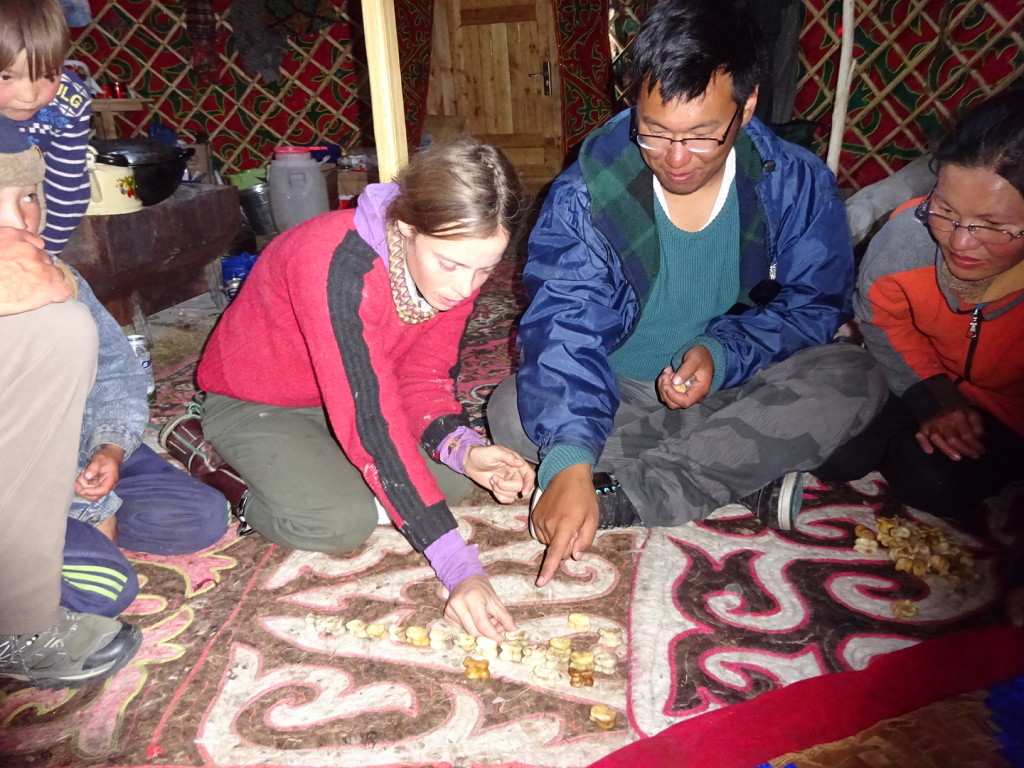
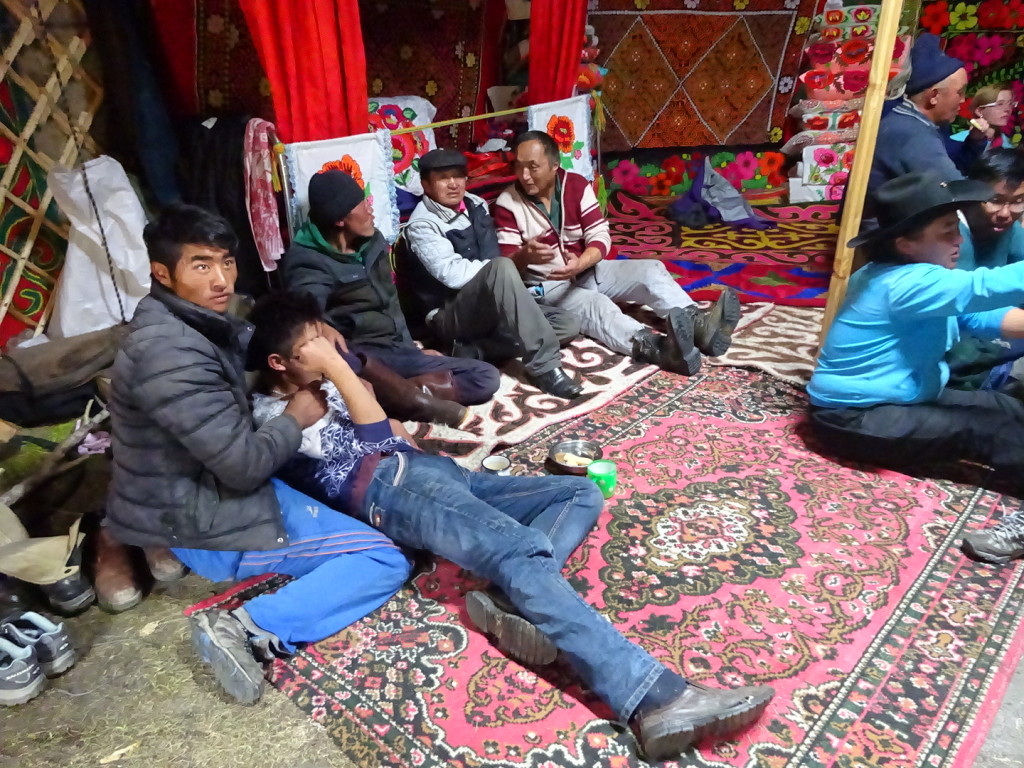
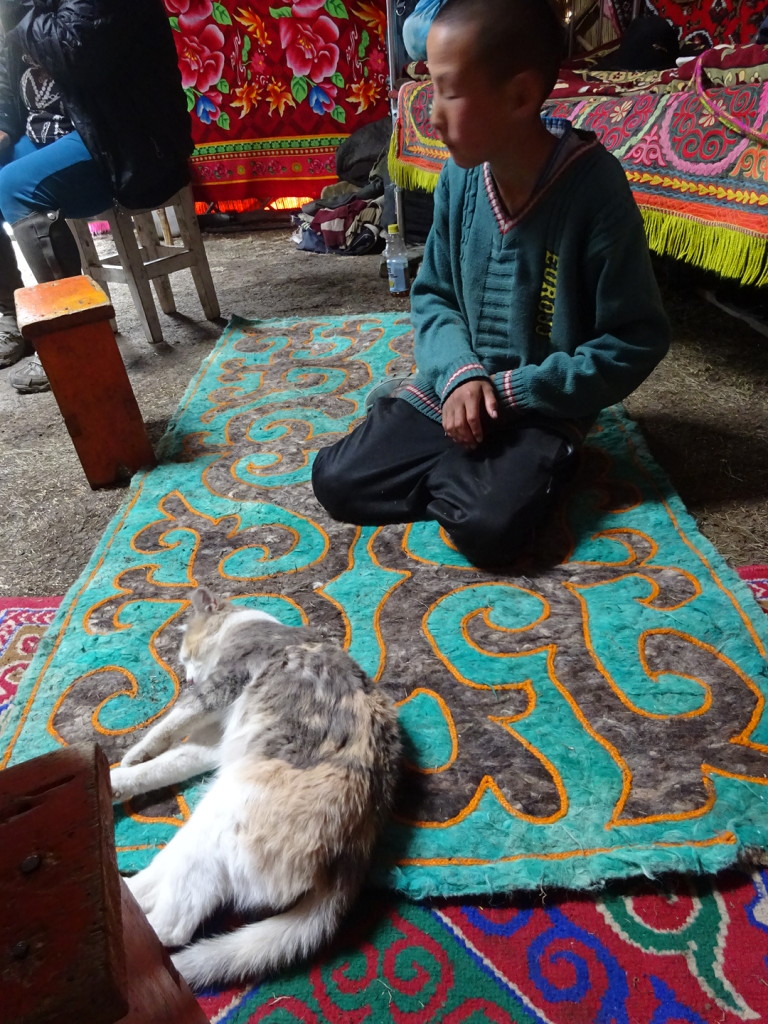
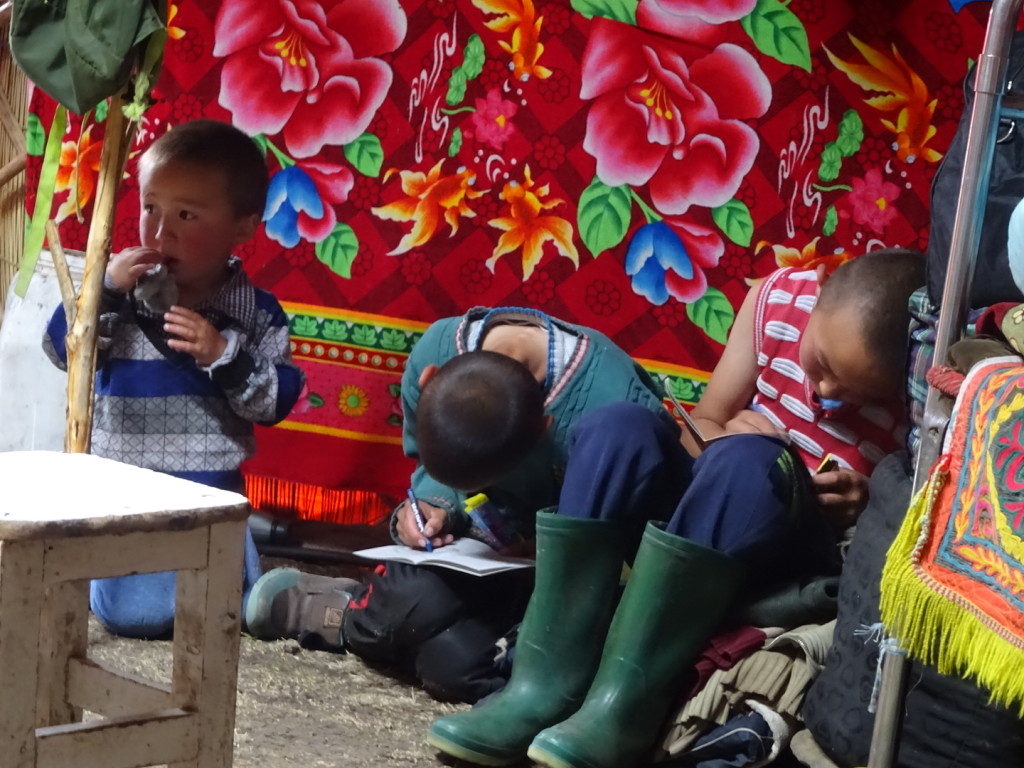
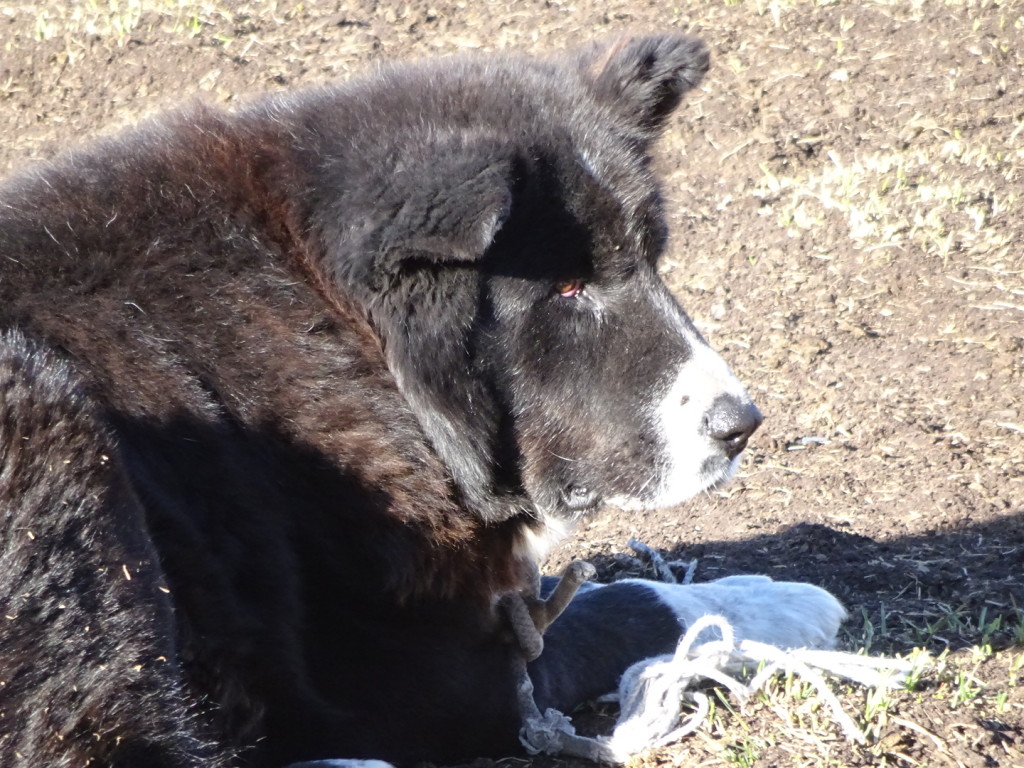
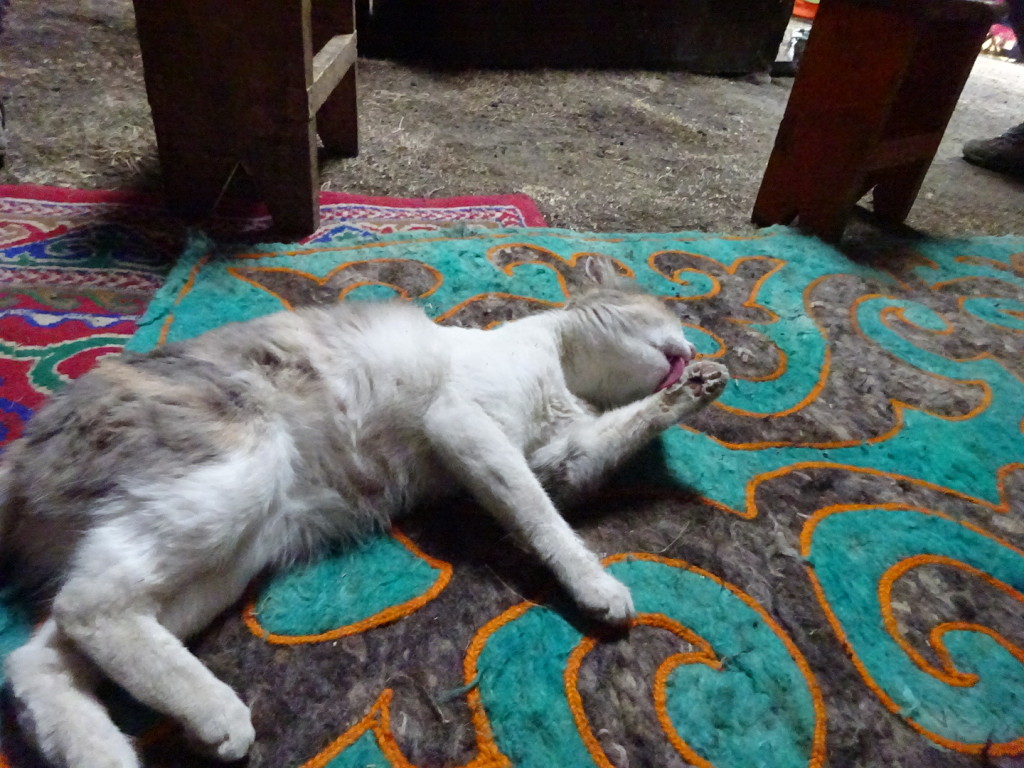
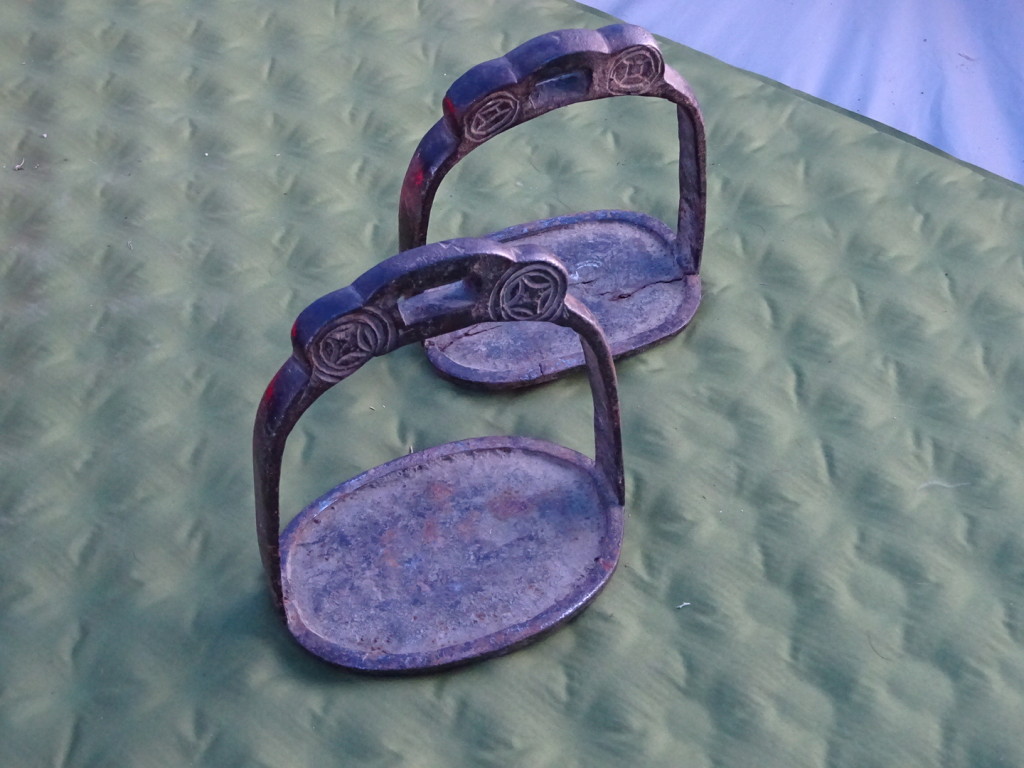
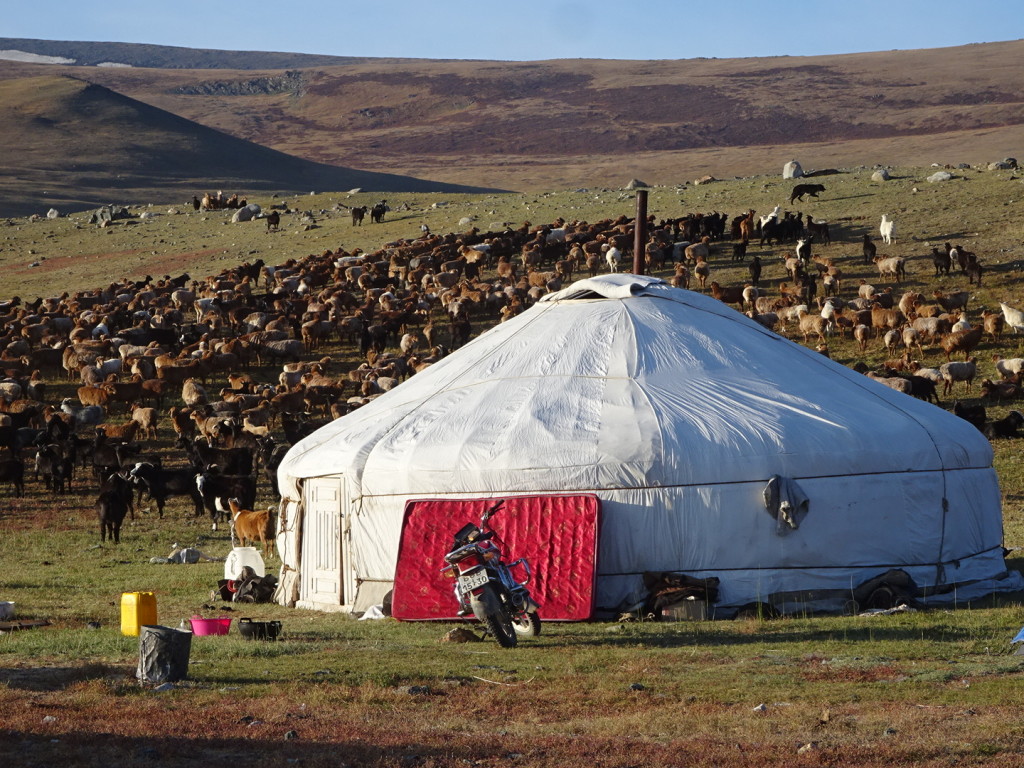
Just LOVE reading about this fascinating nomadic life; simple beauty and function. Speaks volumes about adapting to your environment!
Absolutely true! The Khazak Mongolians have a truly amazing lifestyle. Normal to them, of course, but beautiful to us.
Wow, that’s really interesting. Thanks for sharing!
Our pleasure! We head off to Wales in the morning for a new house sit with two dogs. They won’t be Doyle, but we’ll do our best to love them anyway.
Just love all your adventures and hope a book will be a part of the next phase on your to do list !
You never know… 🙂
And you didn’t sneak me out one of those glorious rugs or tapestries? Sniff. I believe the Mongolians call their homes yurts. I’ve visited a few friends who lived yurts, owner-built in the U.S. They are even building yurts in some RV parks for overnight accommodations. The trouble with round buildings, whether ger, yurt or dome, our kind of furniture, with its straight lines, doesn’t fit very well. But the gers sure look comfy. Maybe a small one in your backyard?
Alas, they were a bit pricy for just snagging…and it turned out to be crazy expensive to ship home! Doubled the cost, if you can believe it!
Yurts and gers are, in fact, the same thing, but Mongolians call them gers while other cultures/languages call them yurts. Regardless, they’re mighty cool.
Okay. This is now definitely my favorite post. At least, the most educational one. Thanks for all the detail and insight.
Always glad to spread a little bright and colorful knowledge with the world! The gers really were amazing refuges. I can only imagine what they might be like when they let you get out of the real cold in the winter.
would like to know more about the pickles — were they dill, sweet ?? LOL
I really enjoyed learning about the gers. You did an excellent job at describing them along with the many other things you’ve told us about. I am really enjoying everyone of the blogs. Thanks Henrietta
Absolutely our pleasure! We’re working on a few about our time in Bali right now – stay tuned!